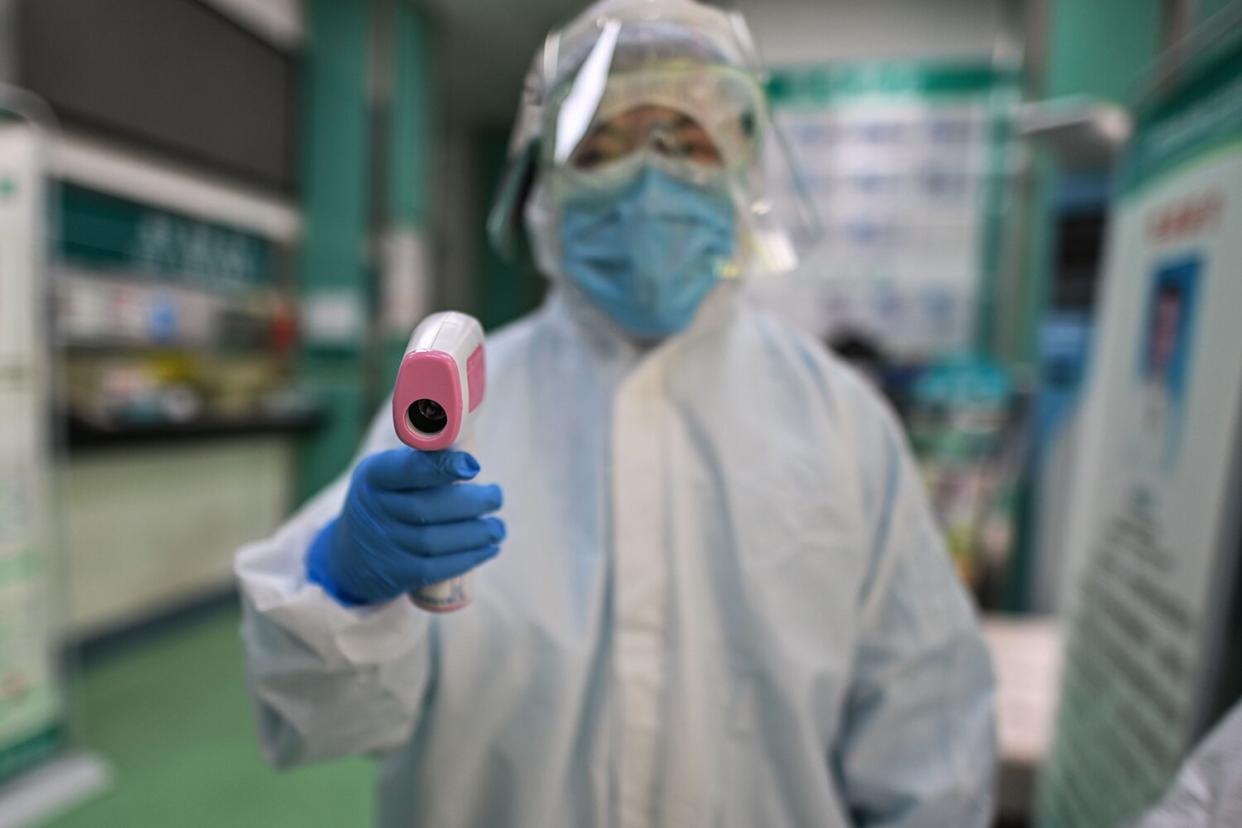New Studies Support That Coronavirus Came from Animal Market in Wuhan, Not a Lab

HECTOR RETAMAL/AFP via Getty Images COVID testing in Wuhan, China
Inquiry into the origins of the coronavirus pandemic continues, with two new studies supporting the theory that it came from germs that pass between humans and animals at a market in Wuhan, China.
"The Huanan Seafood Wholesale Market in Wuhan, China, was identified as a likely source of cases in early reports but later this conclusion became controversial," one study in the journal Science, published Tuesday, explained. "We show the earliest known COVID-19 cases from December 2019, including those without reported direct links, were geographically centered on this market."
Live mammals that would have been susceptible to SARS-CoV-2 were sold at the market, the study explained. SARS-CoV-2 is a virus that causes COVID-19 in humans.
The Associated Press reported that in addition to evidence supporting the virus' origin, the other study, also from the journal Science, indicates that the pandemic began with two lineages — A and B.
RELATED: More Than 40% of Parents Won't Get Their Young Children Vaccinated Against COVID, Survey Finds
"We show that SARS-CoV-2 genomic diversity before February 2020 likely comprised only two distinct viral lineages, denoted A and B," it said.

Getty Images The Huanan Seafood Market
The report stated that the emergence "likely" stemmed from "multiple zoonotic events." According to the CDC, zoonotic diseases (like monkeypox) are diseases caused by germs passed between animals and humans.
"While there is insufficient evidence to define upstream events, and exact circumstances remain obscure, our analyses indicate that the emergence of SARS-CoV-2 occurred via the live wildlife trade in China, and show that the Huanan market was the epicenter of the COVID-19 pandemic," one of the studies said.
A coauthor of one of the studies, Kristian Andersen, a professor in the Department of Immunology and Microbiology at Scripps Research, said that although he was also swayed by the theory of a lab leak, the new information points to one conclusion.
"All this evidence tells us the same thing: It points right to this particular market in the middle of Wuhan," Andersen said, per the AP. "I was quite convinced of the lab leak myself until we dove into this very carefully and looked at it much closer."
RELATED: President Biden's COVID-19 Symptoms 'Almost Completely Resolved' After 4 Days of Paxlovid
Andersen said that while their research has not "disproved" the lab leak theory, it presents an important distinction.
"I think what's really important here is there are possible scenarios and there are plausible scenarios and it's really important to understand that possible does not mean equally likely," Andersen added.
Angela Rasmussen, a virologist at the University of Saskatchewan and co-author of one of the new papers, said in an email to The Washington Post that these results are the only ones that "fit the facts."
"There is no alternative explanation that fits the facts, so anyone trying to come up with one will have to become adept at willful ignorance, a logical contortionist, or simply a fabulist," she wrote.

